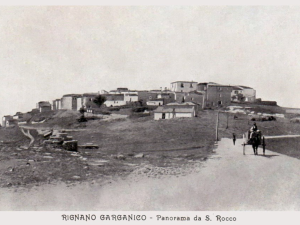Shiller PE Ratio
When markets are expensive, I reduce my exposure to equities in those regions, shift some money to alternative assets, and use other strategies to keep my cost basis lower and maintain more protection. That shows us that in extreme situations involving small markets with just a handful of companies with major structural changes, the CAPE can be misleading. Here’s an overview of GE Vernova’s business and whether the stock would benefit investors’ portfolios. Moneyweek is part of Future plc, an international media group and leading digital publisher. IG is a trading name of IG Limited a company registered at 2702 & 2703 Level 27, Tower 2, Al Fattan Currency House, DIFC, Dubai, United Arab Emirates. IG is authorised and regulated by the Dubai Financial Services Authority (DFSA) under reference No.
Plan your trading
The CAPE ratio is used to forecast the likely earnings of https://www.forex-reviews.org/ a company or index over the next 20 years. The theory is that the lower the value of the ratio, the higher the return from equities over the next two decades as the stocks come into line with their true value. And the higher the value of the ratio, the less likely equities are to achieve oversized returns, as their stock prices are inflated already. The CAPE ratio is a comparison of a stock or index price to its total earnings, which is used to tell whether its’s over or undervalued. It’s an extension of the traditional price-to-earnings ratio (P/E) that monitors a ten-year period to account for variations in profitability due to economic cycles.
Sign up for MoneyWeek’s newsletters
When the economy witnesses expansion, the consumers spend more on purchasing products and items. On the other hand, during recessions, the market witnesses a negative cyclic impact. As the economic turmoil affects consumer’s employment and income level negatively, their purchasing power deteriorates, and they spend less on buying.
However, the CAPE ratio has been higher than 25 and even 30 since then in the mid-2010s and early 2020s, and we haven’t seen that kind of market crash. While active investors may want to make the CAPE ratio one of the metrics they use, it’s less important if you’re planning to buy and hold for decades, canadian forex brokers since you’ll be able to ride out down markets. Financial Analysts use the Cyclically-Adjusted Price to Earnings Ratio to assess long-term financial performance, while isolating the impact of economic cycles. Which is where the cyclically-adjusted price/earnings ratio – or Cape, for short – comes in.
- In the meantime, feel free to read on to find out more about this investment metric.
- This guide will walk you through what the CAPE Ratio is, how it’s calculated, and its place in the landscape of market analysis, helping you unlock a higher level of financial insight.
- A “good” CAPE Ratio is relative and can depend on historical averages, economic conditions, and future growth expectations.
- Calculating the CAPE Ratio involves a few steps but is straightforward once the process is understood.
- The first step in calculating the CAPE Ratio is to compile the last 10 years of a company’s earnings.
- When markets are expensive, I reduce my exposure to equities in those regions, shift some money to alternative assets, and use other strategies to keep my cost basis lower and maintain more protection.
Create a free account to unlock this Template
A “good” CAPE Ratio is relative and can depend on historical averages, economic conditions, and future growth expectations. In general, a lower CAPE Ratio signals potential undervaluation, while a higher number suggests caution. To imagine this in practice, consider a company whose adjusted earnings over the past ten years total $10 per share.
- Integrating the CAPE ratio into your investment strategy may enhance your understanding of market cycles and empower you to identify undervalued opportunities.
- By considering long-term earnings data, investors can better evaluate a company’s growth potential and assess whether its current price accurately reflects its future earnings prospects.
- That shows us that in extreme situations involving small markets with just a handful of companies with major structural changes, the CAPE can be misleading.
- It’s not about big portfolio moves, or relying heavily on any given metric.
- However, the answer you get might not always represent the reality of the situation.
- Investing in the cheapest 25% of countries based on CAPE ratios would have returned 3,052%, or more than three times as much.
- The ratio also considers economic fluctuations, including the economy’s expansion and recession.
Calculating the Average Inflation-Adjusted Earnings
Two popular trading account options for traders to choose from are the Raw spread and Standard accounts. These account types cater Healthcare stocks to buy to the needs of traders across all experience levels, provid… At its core, the CAPE Ratio, or Cyclically Adjusted Price-to-Earnings Ratio, serves as a tool to evaluate if a market is over or under-valued. It was developed by Nobel laureate Robert Shiller, a renowned economist, who sought a more stable alternative to the traditional P/E Ratio. The CAPE ratio was derived by Robert Shiller, an American economist and Nobel Prize Laureate in economics.
A high number indicates that a stock may be expensive, or perhaps that investors expect earnings to grow rapidly. The value of shares and ETFs bought through an IG stock trading account can fall as well as rise, which could mean getting back less than you originally put in. Please ensure you fully understand the risks and take care to manage your exposure. If the P/E ratio figure is high when compared to other companies in the industry or an index – typically above 11 – then the stock is overvalued. The CAPE ratio – which stands for cyclically-adjusted price-to-earnings – is also known as the Shiller P/E. It was named after professor Robert Shiller who first developed the method, alongside his colleague John Young Campbell.
On the other hand, Bespoke’s data set found the average of 27 S&P 500 bull markets lasted 1,011 calendar days, or roughly 3.5 times longer than the typical bear market. Further, if you include the current bull market rally (extrapolated to present day), over half out of of all bull markets have stuck around longer than the lengthiest bear market. The Shiller P/E is based on average inflation-adjusted earnings from the previous 10 years, which means that shock events won’t be able to skew its readings. Professor Robert Shiller of Yale University popularised this idea of the cyclically-adjusted price/earnings ratio – or Cape, for short – in his book Irrational Exuberance, which was published in 2000. While many financial analysts lauded the creation of the Shiller P/E ratio, it gained even more notoriety when it correlated with both the Dot-Com Bubble and the Great Recession.
The CAPE Ratio addresses this limitation, offering a more nuanced view of valuation. The CAPE Ratio’s significance lies in its ability to offer a long-term view of a stock’s profitability and potential for growth. By considering a decade’s worth of earnings, the CAPE Ratio smooths out short-term volatilities, providing a clearer picture of underlying value. The CAPE Ratio, or the Cyclically Adjusted Price-to-Earnings ratio, stands as a pivotal metric in the realm of investment analysis.
For long-term investors, one of the most important benchmarks to consider is the value of a company vs. what it’s trading for. Many investors use P/E as a quick metric for understanding relative value; however, the CAPE ratio might be a more accurate way to gauge whether a stock is over- or under-valued. And while looking back isn’t always the best solution for making forward-looking predictions, the CAPE ratio provides aggregate data that’s an effective means to benchmarking a company’s value. Analysts and investors need a sense of the average to evaluate if certain metrics fall above or below it. Unfortunately, identifying an accurate average is more difficult than it seems. This is especially true when determining a company’s price-per-earnings ratio.
Il sito è gestito dal Circolo Culturale Giulio Ricci e ripropone i contenuti dell’archivio del Fondo Tonino Del Vecchio.










Commento all'articolo